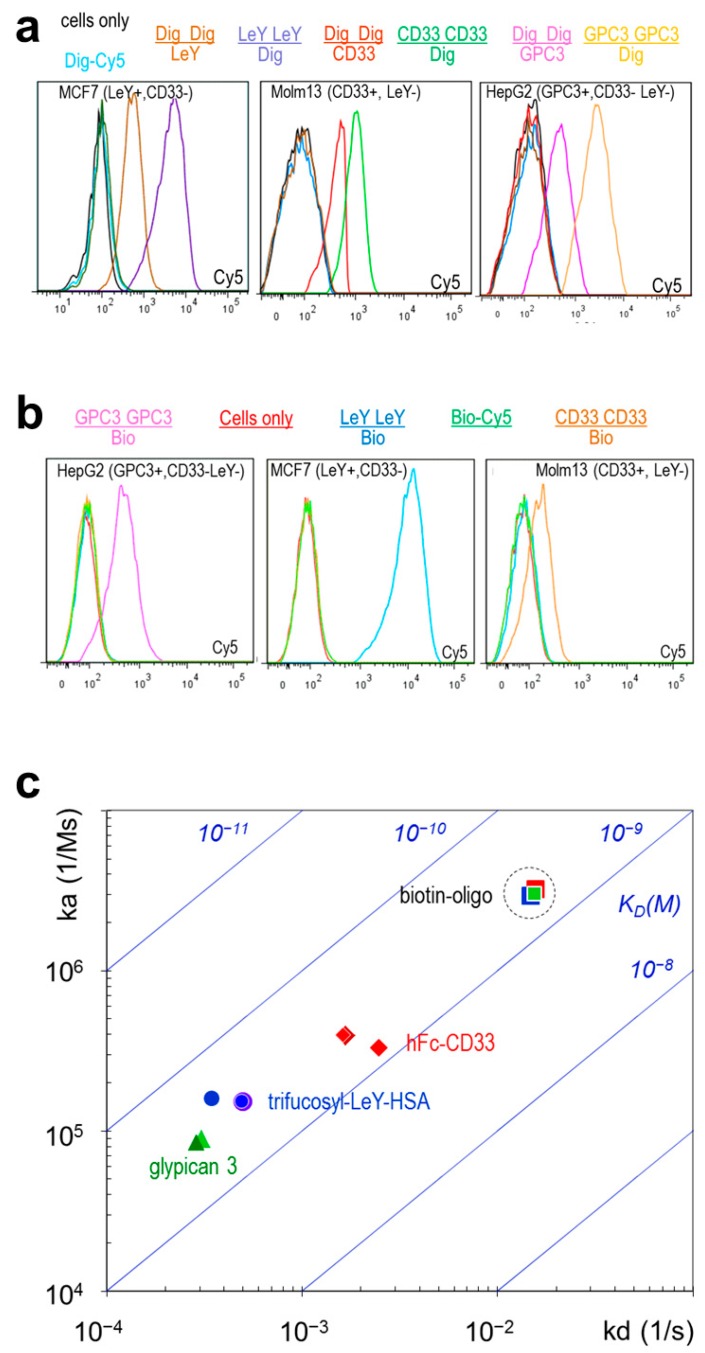Figure 2.
TriFab mediated targeted delivery of a small molecule. (a) TriFabs specific for glypican3 (GPC3, [12]), CD33 or LeY [11] combined with Dig-specificity were tested by FACS on LeY+,CD33− MCF7, CD33+,LeY− MOLM13 and GPC3+,Ley−,CD33− HepG2 cells with Dig-Cy5 payload [11]. “+” indicates expression of the listed antigen “−“indicates lack of expression. The binding specificities of the Fab arms are represented for each analysed molecule as “numerator” and the specificity of the Fv in the stem region as “denominator” with matched colour (except for Dig-Cy5 only or cells only which are light blue or black, respectively). Specific cell surface and hapten-binding is observed for TriFabs that bind cells with Fab arms and hapten in the stem region. Specific cell surface and hapten-binding is also observed for TriFabs that bind hapten bivalent with Fab arms and CD33 or GPC3 or LeY monovalent in the stem region; (b) TriFabs that have the Dig-binding moiety replaced by Biotin-binding moieties show same functionality when coupled to the payload Bio-Cy5 [13,14]; (c) Comparison of the SPR-determined affinities of Biotin-binding TriFabs which bind cell surface antigens with their Fab arms (bivalent) and Biotin (monovalent) with their stem-Fv. Listed are the on (ka) and off rates (kd) on y- and x-axes, respectively, as well as the resulting KD values (diagonal panels). Dashed circle: the Bio-binding of the stem region remains unaltered irrespective of which target antigen is addressed by the TriFab.

